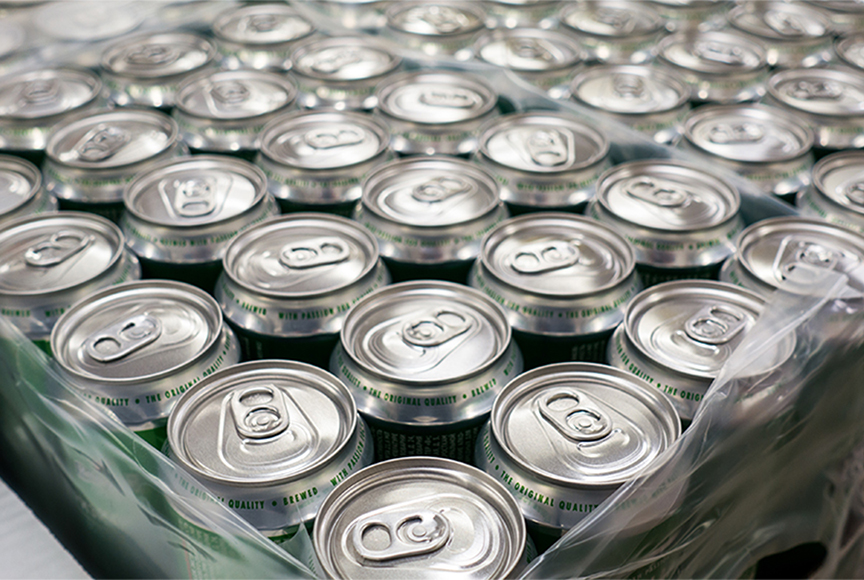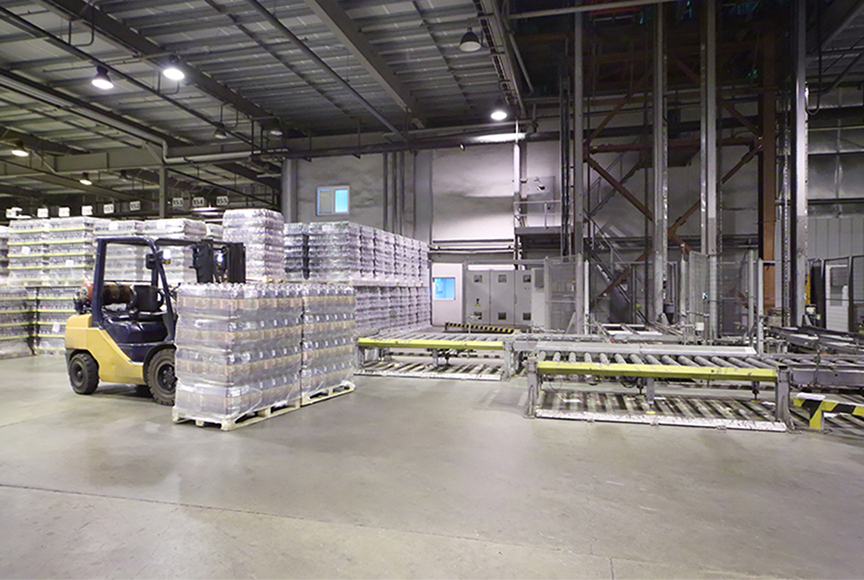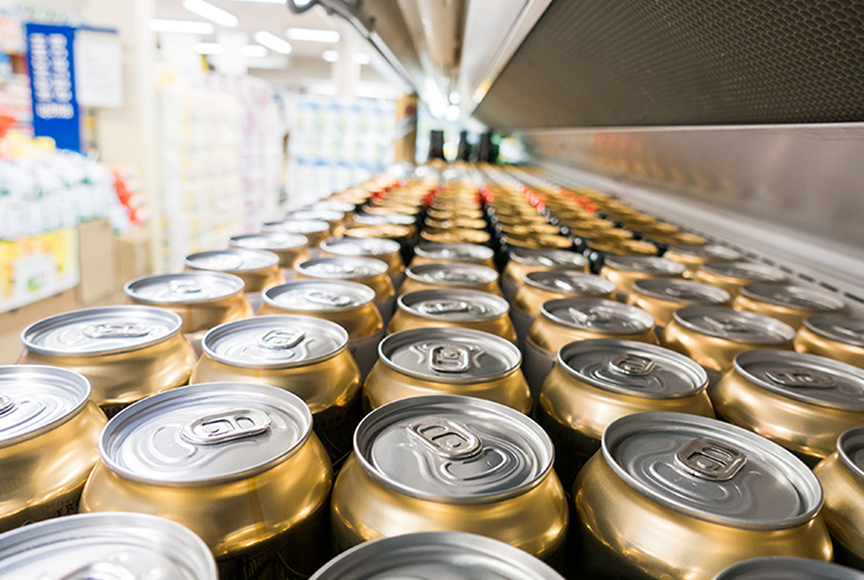Can logistics: lighter, greener and more efficient
The benefits of the beverage can are well established: lightweight, easily stackable, strong, ... The logistical merits are less obvious, but no less real: from delivery to fillers, retailers and recycling units, and from in store to the consumer’s home.
1. In transit
Cans in transit from manufacturer to filler offer environmental and economic advantages in two ways. Firstly, the cubic efficiency in transport and warehousing is unmatched. Can bodies can be stored four pallets high, and each pallet can hold up to 23 layers of 33cl beverage cans (subject to transport height constraints).
Secondly, other producers of packaging containers have made progress in making them lighter, but metal cans still weigh much less. Each pallet load may weigh under 200kg, including the weight of the pallet itself.

Can bodies can be stored four pallets high, and each pallet can hold up to 23 layers of 33cl beverage cans.
The lighter, compact packaging means a big saving in shipping costs as well as huge benefits in reducing the environmental impact of transporting beverages. A 2016 study by ICF International found that greenhouse gas (GHG) emissions associated with the transportation and refrigeration of beverages in aluminium cans were reduced by 7% and by up to almost 50% in some cases, depending on the size of the cans and the final destination.
Where can-maker and filler are situated together, cans are much more amenable to carriage on fast-moving conveyors. Some companies have a policy of “wall-to-wall” production, where the cans are manufactured and filled on the same site, enabling the company to save on transport and curb its associated harm to the environment.
Cube utilisation is one of the main elements in optimising the supply chain performance in transport. It helps to keep the transport cost under control and, more importantly, has a significant, positive impact on reducing carbon emissions. Pallet layer optimisation and stacking height on pallets in containers or in warehouses are the key factors in reducing supply chain costs and energy consumption, while increasing handling efficiency.
2. In storage
The cost of storage space at canmakers and fillers is also a vital consideration, as cubic efficiencies kick in at the beginning of the process. A pallet can accommodate four times as many filled cases of cans as other alternatives, a major saving for small and town-centre retailers facing high rental costs. In addition, up to 2.5 times as much beverage may be carried on a lorry in metal cans.

A pallet can accommodate four times as many filled cases of cans as other alternatives.
3. Material reduction
Canmakers have reduced the amount of aluminium and steel used to produce cans by around 50% in the past 40 years: a 500ml aluminium can now weighs around 16 grams, while a steel can weighs around 30 grams. Transport costs are a function of weight, so this further reduces outgoings and also CO2 emissions. The can is the only container that is fully protected from light and is oxygen-tight, helping to protect the beverage inside. This also makes it easier and cheaper to transport and store. Where the product is to be sold chilled, the metal can and its contents can be cooled more quickly and efficiently than the alternatives.
4. A complex route to market
A beverage’s route to market may be a complex one. From a bulk warehouse via primary transport – road, rail or even waterway – to a retailer’s distribution centre and secondary transport (usually on the road). Retail outlets receive, store, move to aisles and stock shelves and merchandise units. The consumer then transports the product from the shelf, through the checkout and then home, where he’ll happily enjoy it. At every point the can scores well.

For manual replenishment of retail space, cases of cans are lightweight, easier to move and stack.
High stackability reduces the number of forklift operations in loading and unloading, high cubic efficiency maximises the use, and minimises the number of trucks and rollcages, and both combine to minimise floor space in warehousing. Cans also optimise use of merchandise units and retail shelves. For manual replenishment of retail space, cases of cans are lightweight, easier to move and stack, and far more forgiving of any clumsiness – the customer too enjoys these advantages.
Overall, the superior performance of the metal can in the logistics chain is clear. The ease of handling, cost efficiencies and the comparative environmental benefits combine to make the can the perfect package for today’s refreshing beverages.
--
Metal Packaging Europe gives Europe’s rigid metal packaging industry a unified voice, by bringing together manufacturers, suppliers, and national associations. We proactively position and support the positive attributes and image of metal packaging through joint marketing, environmental and technical initiatives.
Stay up to date with more insights and subscribe to our mailing list >>